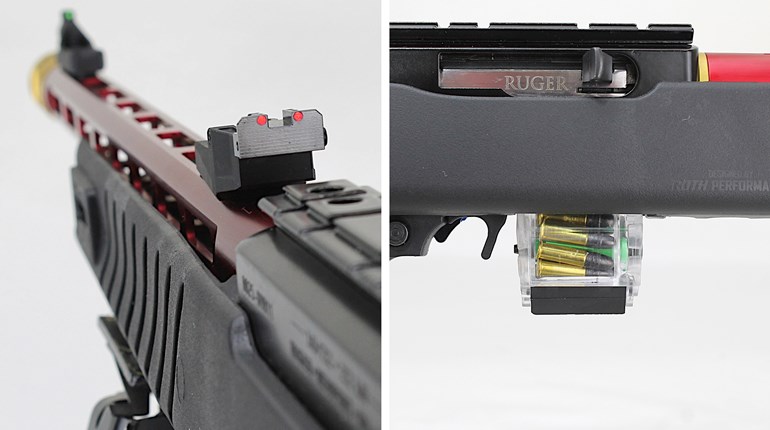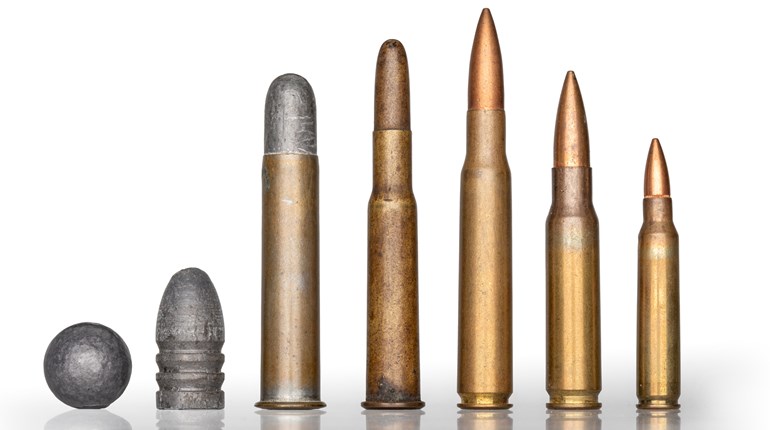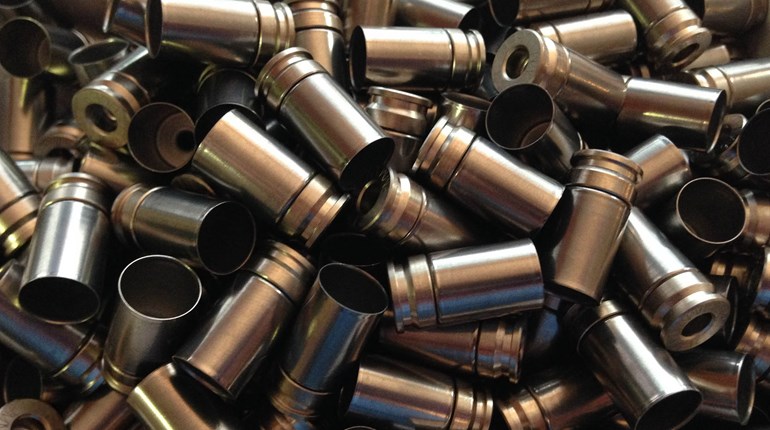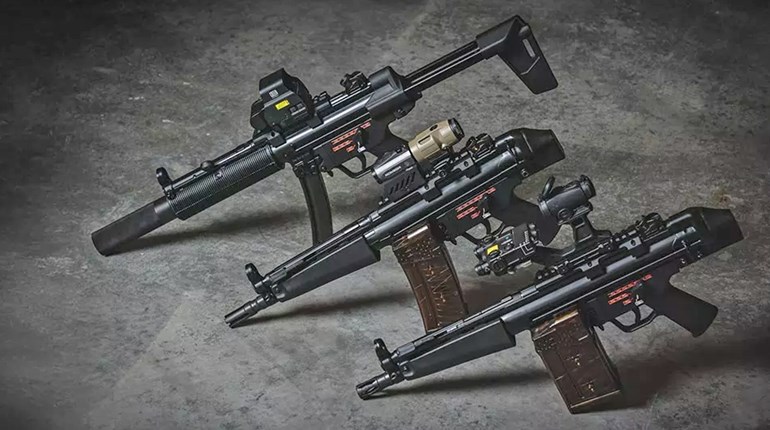
The FN FAL has had a long and distinguished service life and was adopted by the armed forces of 93 countries, one of which was the UK. In 1988 the British government decided its subjects were no longer fit to own the nation's service rifle and confiscated any legally owned specimens, so when I moved to the USA 10 years later to escape Britain's handgun ban, I figured it was time to redress the issue.
I've always had a soft spot for the British version of the FAL, having grown up seeing images of the Falklands conflict beamed onto the family TV screen and then being issued one in the UK equivalent of ROTC. Arriving in New York during the Clinton-era "assault weapons ban," the opportunities for acquiring a genuine example of the L1A1 SLR (as the Brit version was called), were slim. The options were either to buy a British parts kit assembled on a metric receiver by Century International Arms, or build one from scratch myself. Either method produced a rifle that had absolutely no value to collectors, but as the L1A1 had gone through a number of revisions while in the hands of Her Majesty's armed forces, I didn't feel too bad about adding some of my own ideas to the mix. With my newly issued American credit card in hand, I ordered a demilled Austrian FAL parts kit and a Brazilian Imbel receiver, and went to work.
While awaiting the arrival of a box full of scrap iron, I read everything I could about the FAL, from Blake Stevens' magisterial work to online squabbles, of which there was no shortage. I learned about headspacing, barrel timing and locking shoulders, and took the opportunity to whittle my own set of action blocks with my trusty Dremel tool. I also carefully planned which of the original features would be kept and which would be modified, all the while staying legal under the AWB, USC 922(r) and the ATF's whimsical interpretation of both.
Barrel
The original L1A1 came with a 21-inch barrel topped with a 5-inch flash suppressor. As anyone who has patrolled with one in the low-ready position will attest, the rifle is fairly muzzle heavy and after a few hours, your support-side wrist goes numb. The original flash suppressor was never revised for a more compact version, as doing so would have meant replacing the bayonet that used it as a mount. Not having much use for a bayonet, this was the first thing I swapped out. In its place went a 17.5-inch barrel with a new muzzle brake.
Handguards
The Austrian StG58 parts kit came with a set of pressed-steel handguards, which were truly awful. I replaced these with a U.S.-made polymer version, which resulted in a grip that was much cooler (both in terms of temperature and looks) and more secure.
Magazine Release
One area where the Brits made their rifle vastly superior to the original Belgian design was its mag release. The L1A1's was much bigger and easier to manipulate than its continental cousin, so this was a no-brainer addition to the project gun.
Safety
When Royal Ordnance took on the task of modifying the FN design for British service, it deleted the full-auto function on the selector switch, correctly reasoning that firing a full-auto 7.62 NATO rifle from the shoulder was a great way of converting live rounds into brass but did nothing for a soldier's ability to hit his target. Royal Ordnance also added a huge thumb shelf to the safety, making it very easy to find and flip, so I swapped the tiny original for the beefier UK version on my rifle.
Cocking Handle
I happen to like the folding cocking handle on the L1A1, so I modified the receiver to take it. I know some knowledgeable folks out there will leap to their keyboards to tell me the Israeli version is far superior, but hey, this my gun and old habits are hard to break.
Pistol Grip
I think most people find the metric pistol grip uncomfortable and awkward due to its angle and shape. While the British counterpart is more useable, this is one area where a departure from tradition made sense. An Ergo grip was simple to install and felt great in the hand, so it was easy to justify the 25 bucks for this non-standard feature.
Sights
On any of the as-issued rifles—metric- or inch-pattern—the sights leave something to be desired. An easy and worthwhile addition is the Standard Crosshair front sight from KNS Precision. At close range it functions like a double ghost ring, and as the distance increases, it obscures much less of the target than the original post.
Once I made the various tweaks and changes, I assembled the rifle, and polished and tuned the trigger group. Finally, I coated the whole thing in one of the proprietary "shake-and-bake" finishes, much of which has been worn off in the intervening years as the rifle has been ridden hard and put away wet.
So how does this unholy conglomeration actually perform? With match-grade handloads, it has no trouble placing 10 rounds in a 1.25-inch group at 100 yards, using iron sights. The week before I wrote this, I used it to place second in the Heavy Metal division in an area 3-gun match, which isn't too shabby for a mongrel cobbled together in a basement. The rifle isn't bad either.






































